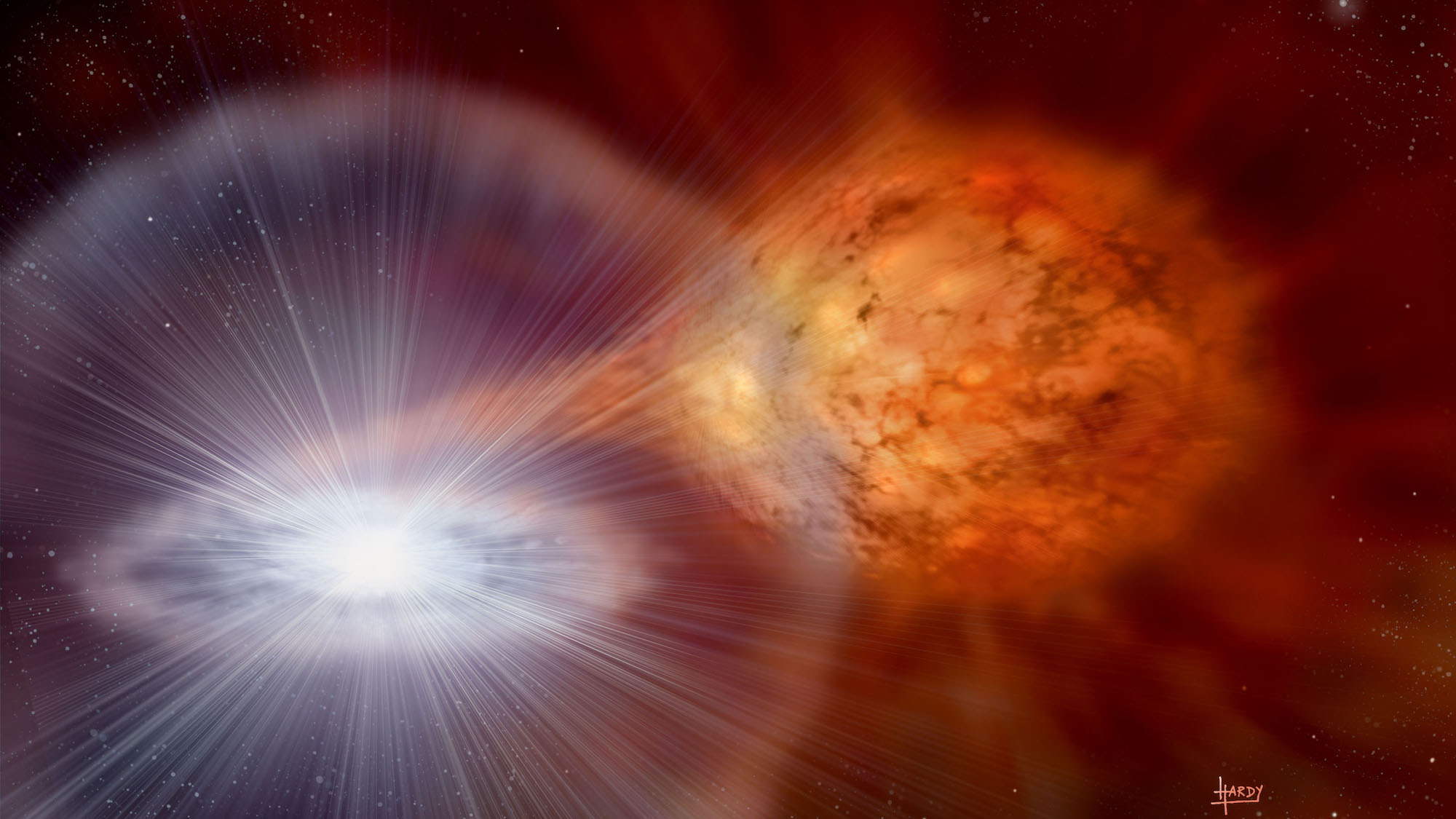Arizona State University | 2019 Feb 28
ASU scientists make breakthrough in modeling how stars erupt thanks to studies of microscopic stardust grains
What do tiny specks of silicon carbide stardust, found in meteorites and older than the solar system, have in common with pairs of aging stars prone to eruptions?
- Stars that erupt in nova explosions are binary pairs of stars that consist of a compact, hot white dwarf (left) and a cool, extended giant star. The giant sheds hydrogen gas that is pulled into the white dwarf, where it accumulates until a thermonuclear explosion happens. The recurring explosions throw out dust and processed elements into space where they can become part of entirely new stars. This illustration shows RS Ophiuchi, a nova that erupts about every 20 years. Image copyright David A. Hardy/astroart.org
A collaboration between two Arizona State University scientists — cosmochemist Maitrayee Bose and astrophysicist Sumner Starrfield, both of the School of Earth and Space Exploration — has uncovered the connection and pinpointed the kind of stellar outburst that produced the stardust grains. ...
The microscopic grains of silicon carbide — a thousand times smaller than the average width of a human hair — were part of the construction materials that built the sun and planetary system. Born in nova outbursts, which are repeated cataclysmic eruptions by certain types of white dwarf stars, the silicon carbide grains are found today embedded in primitive meteorites.
"Silicon carbide is one of the most resistant bits found in meteorites," Bose said. "Unlike other elements, these stardust grains have survived unchanged from before the solar system was born." ...
Condensation of SiC Stardust in CO Nova Outbursts ~ Maitrayee Bose, Sumner Starrfield
- Astrophysical Journal 873(1):14 (01 Mar 2019) DOI: 10.3847/1538-4357/aafc2f
- arXiv.org > astro-ph > arXiv:1812.11432 > 29 Dec 2018
